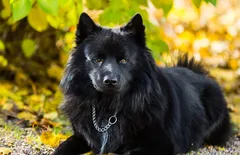
Lhasa Apso
His alert and somewhat suspicious nature make him an excellent watchdog. He is adventurous, intelligent, spunky and independent.
Overall Status
| Height | 10 to 11 inches at the shoulder |
| Temperament | Confident, Smart, Comical |
| Weight | 12 to 18 pounds |
| Life Expectancy | 12 to 15 or more years |
| Coat Color | Black, Brown, Red, White, Yellow |
| Barking Level | Frequent |
Quick Factors
| Playfulness | |
| Dog Friendly | |
| Exercise Need | |
| Grooming Needs | |
| Strangers Friendly | |
| Family Affectionate |
Daily Care
Grooming Tips
If you are looking for a dog with an easy-care coat, it’s safe to say that the Lhasa Apso is not the right choice. That glamorous Lhasa you see sweeping around the show ring is the product of endless hours of grooming. Even if your Lhasa will be a pet, his long coat will still need regular care.For a pet, expect to brush and comb the long, straight, heavy coat daily. When you brush, be sure you get all the way down to the skin. If you just go over the top of the coat you’ll miss many mats and tangles. Your dog’s breeder can show you the best techniques to use. The American Lhasa Apso Club also has goodgrooming advice.Pet Lhasas can be kept clipped short, but that still means frequent professional grooming. Neglected coats become tangled and matted, which is painful and can lead to serious skin infections. A Lhasa needs a bath at least every two to three weeks. The good news is that he doesn’t shed much, but you will still find a few hairs here and there.The rest is basic care. Trim the nails as needed, usually every week or two. Small dogs are prone to periodontal disease so brush the teeth frequently with a vet-approved pet toothpaste for good overall health and fresh breath.
Exercise Tips
Lhasa Apsos have a moderate energy level, so it doesn’t need much exercise. That doesn’t mean your dog should nap all day – you want your pup to stay healthy, trim and fit. Take your Lhasa Apso for a walk, let them scamper about and run free to play in the backyard. This breed loves to play fetch and will chase the ball until it gets tired out.If you don’t have a backyard, don’t worry – your Lhasa Apso can exercise indoors. This breed doesn’t need a lot of space to move around, but your dog will need to get enough exercise every day.
Feeding Tips
Lhasa Apsos thrive onhigh-quality food. Since they usually have thick skin to support their heavy hair coat, Lhasas need a diet with good protein and fat levels.Breeders recommend food with fat level above 14 percent. The protein source (meat, fish, game, etc.) depends on the individual dog’s tolerance and taste. Most Lhasas tend to utilize their food very well, and even slight overfeeding can lead to unpleasant digestive outcomes.Food can be fed dry, or slightly moistened with a little flavor enhancement such as cooked meat or a grain-free canned food. Whether to feed once or twice a day is a personal choice for owners, but dogs thrive on consistency, so it is recommended to keep the frequency and time of day constant.
Health Tips
The Lhasa Apso is a fairly healthy dog. There are a few issues you may have to deal with. This breed is susceptible to ear infections, which can occur if you don’t take the time to dry them properly after it gets wet, or if it has unnecessary hair in their ears.Keep its long hair away from its face otherwise, your Lhasa Apso’s eyes will tear. You may also encounter a skin condition called sebaceous adenitis, which can cause irritations of their skin that lead to Hot Spots or localizedskin infections, loss of hair, itching and skin that is flaking. Lhasa Apsos can also develop genetic kidney problems.
Trainability
Training your Lhasa Apso can be a rewarding and fun time. Training takes time and patience, so be calm and never be harsh with your dog.Lhasa Apsos are known for having a mind of its own, you’ll need to be extra patient with this strong-willed breed. It’s easier to get your dog to do what you want when you usetreats as an incentive, and you’ll find that your Lhasa Apso learns quicker this way.Socialization is important, so start early. Get your Lhasa Apso used to strangers slowly so it doesn’t become overwhelmed. This training will come in handy during visits to the groomer and vets.As well, you should crate train your Lhasa Apso as soon as possible. This breed loves caves and dens, so it will love its crate. You can get them used to the crate by taking the gate off, which gives them a place to hide without feeling trapped.
History
The Lhasa Apso originated in Tibet in the Himalayan Mountains hundreds of years ago. It's named after the sacred city of Lhasa. For years the breed remained solely bred in Tibet by holy men and nobles.It was used as a watchdog in temples and monasteries. The dog was considered sacred. The belief was that when its master died the master's soul entered the Lhasa Apso's body. The breed was not easy to come across and was hard to buy. The dogs were considered good luck to their owners.In 1933 the dogs spread to other parts of the world thanks to C. Suydam Cutting, who introduced the first Lhasas to the USA as gifts from the 13th Dalai Lama. Tibet's ruler would present them to visiting foreign diplomats. The Lhasa Apso first appeared in Britain in the 1920s and in the USA in 1930. It was first recognized by the AKC in 1935.






